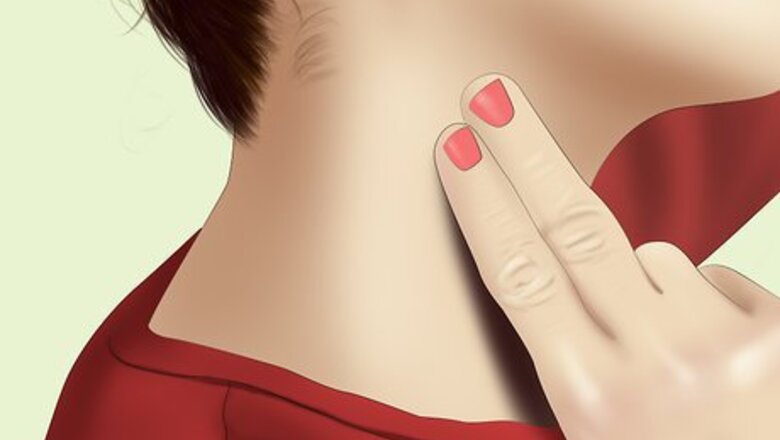
views
X
Research source
This measurement is the best indicator of aerobic endurance and cardiovascular fitness as it calculates how efficiently your cells use oxygen for energy.[2]
X
Research source
There are several methods you can use to measure VO2 max, but many require equipment such as a treadmill or a specially calibrated exercise cycle. These tests can be difficult to administer and are not suitable for all fitness levels. The quickest and easiest way to measure your VO2 max is to use a basic calculation or a walking/jogging test.
Calculating VO2 Max Without a Fitness Test
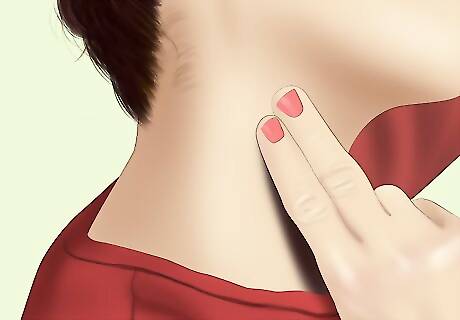
Determine your resting heart rate. Many fitness trackers and watches come with a heart rate monitor. If you have one of these, record your heart rate while at rest (sitting down, doing little-to-no physical activity). The best time to measure your resting heart rate is in the morning before you get out of bed. To determine your heart rate without a monitor, place two fingers against the artery on the side of your neck, just under your jaw. You should be able to feel your heartbeat on your fingers. Set a timer for 60 seconds and count the number of beats you feel. This is your resting heart rate in beats per minute (bpm).
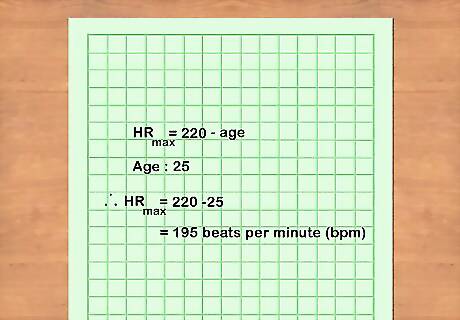
Calculate your maximum heart rate. The most common way to calculate your maximum heart rate is to subtract your age from 220. If you’re 25 years old, your HRmax = 220 -25 = 195 beats per minute (bpm). There is some research that suggests this formula oversimplifies the calculation. You can also estimate your max heart rate with the formula HRmax = 205.8 – (0.685 x age).
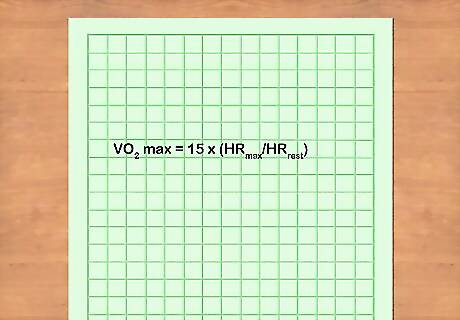
Define the simple VO2 max formula. The simplest formula to calculate VO2 max is VO2 max = 15 x (HRmax/HRrest). This method is considered to compare well with other common formulas. The units for VO2 max are milliliters of oxygen per kilogram of body weight per minute (mL/kg/min).
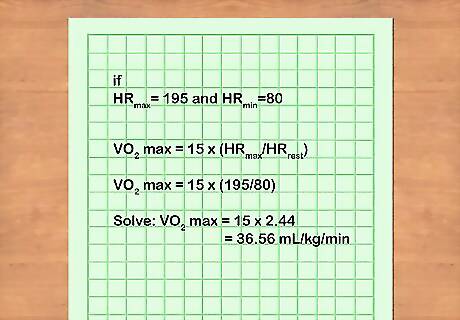
Calculate your VO2 max. Using the resting and max heart rate you already determined, you can plug those values into the formula and calculate your VO2 max. Let’s say you’re resting heart rate is 80 bpm and your max heart rate is 195 bpm. Write the formula: VO2 max = 15 x (HRmax/HRrest) Plug in the values: VO2 max = 15 x (195/80). Solve: VO2 max = 15 x 2.44 = 36.56 mL/kg/min.
Using the Rockport Walking Fitness Test

Put on your heart rate monitor. Walk in slow circles and do light stretching for 10 minutes to warm up before starting the test. If you don’t have a heart rate monitor you can take your pulse yourself and determine the number of beats per minute by counting your heartbeat over 60 seconds.
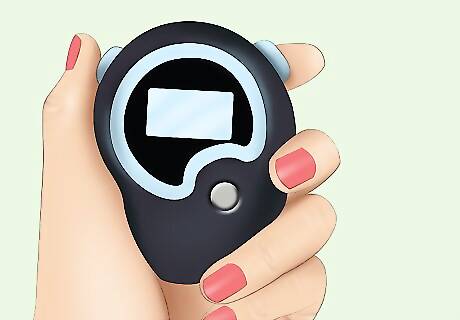
Start your stopwatch and walk the entire distance of a 1 mile (1.6 km). You can walk 1 mile on a treadmill or walk four times around a .25 mile (.40 km) athletic track. You want to make sure your walking track is mostly flat. Walk as quickly as possible without breaking into a jog. You should be breathing heavily, but able to speak 2 or 3 words in a row. On a scale of 1 to 10 the effort should feel like a 7 or 8.
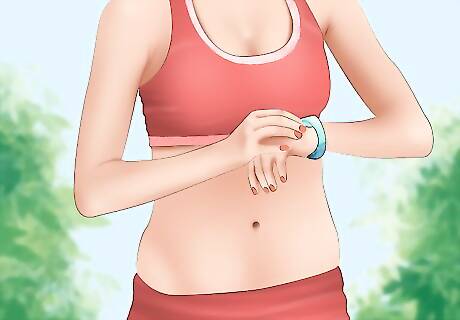
Stop the stopwatch and check your heart rate. After 1 mile, turn off the stopwatch and immediately check your heart rate. If you have a heart rate monitor, record the reading. Otherwise, check your heart rate using the manual method: To determine your heart rate without a monitor, place two fingers against the artery on the side of your neck, just under your jaw. You should be able to feel your heartbeat on your fingers. Set a timer for 60 seconds and count the number of beats you feel. This is your heart rate in beats per minute. Continue walking, slowly, for another 5 minutes to cool down.
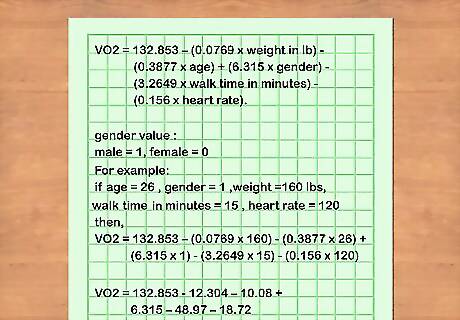
Calculate your VO2 max using the following equation: VO2 = 132.853 – (0.0769 x weight in lb) - (0.3877 x age) + (6.315 x gender) - (3.2649 x walk time in minutes) - (0.156 x heart rate). If you are male, use the number 1, if you are female, use the number 0 for the calculation. For example: A 26 year-old male who weighs 160 lbs, walks a mile in 15 minutes and has a heart rate of 120 at the end. VO2 = 132.853 – (0.0769 x weight in lb) - (0.3877 x age) + (6.315 x gender) - (3.2649 x walk time in minutes) - (0.156 x heart rate) VO2 = 132.853 – (0.0769 x 160) - (0.3877 x 26) + (6.315 x 1) - (3.2649 x 15) - (0.156 x 120) VO2 = 132.853 - 12.304 – 10.08 + 6.315 – 48.97 – 18.72 = 49 mL/kg/min.
Using the Brigham Young University Jog Test
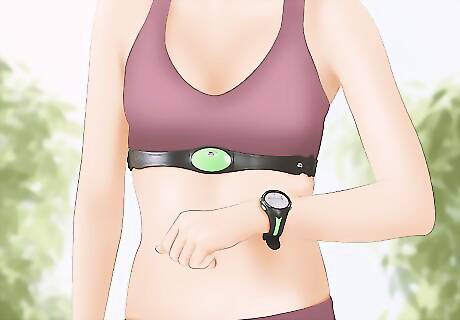
Put on your heart rate monitor. Walk in slow circles and do light stretching for 10 minutes to warm up before starting the test. If you don’t have a heart rate monitor you can take your pulse yourself and determine the number of beats per minute by counting your heartbeat over 60 seconds.

Start your stopwatch and lightly jog 1 mile. You can jog around a .25 mile (.40 km) track four times, or a 1 mile (1.6 km) flat surface. Jog at a steady pace and do not let your heart rate go above 180 beats per minute. Do not jog faster than 8 minutes per mile for men, and 9 minutes per mile for women.

Stop the stopwatch and check your heart rate. After 1 mile, turn off the stop watch and immediately check your heart rate. If you have a heart rate monitor, record the reading. Otherwise, check your heart rate using the manual method: To determine your heart rate without a monitor, place two fingers against the artery on the side of your neck, just under your jaw. You should be able to feel your heart beat on your fingers. Set a timer for 60 seconds and count the number of beats you feel. This is your heart rate in beats per minute. Continue walking, slowly, for another 5 minutes to cool down.
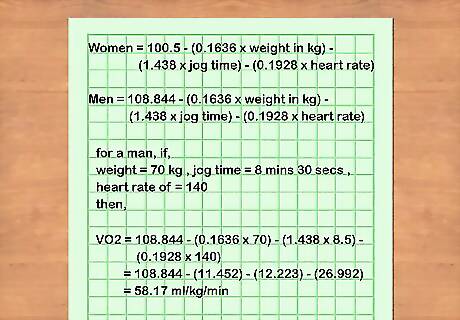
Calculate your VO2 max with the gender-specific equation. This particular test has two different equations: one for men and one for women. Be sure to use the proper equation based on your gender. Women: 100.5 - (0.1636 x weight in kg) - (1.438 x jog time) - (0.1928 x heart rate) Men: 108.844 - (0.1636 x weight in kg) - (1.438 x jog time) - (0.1928 x heart rate)



















Comments
0 comment